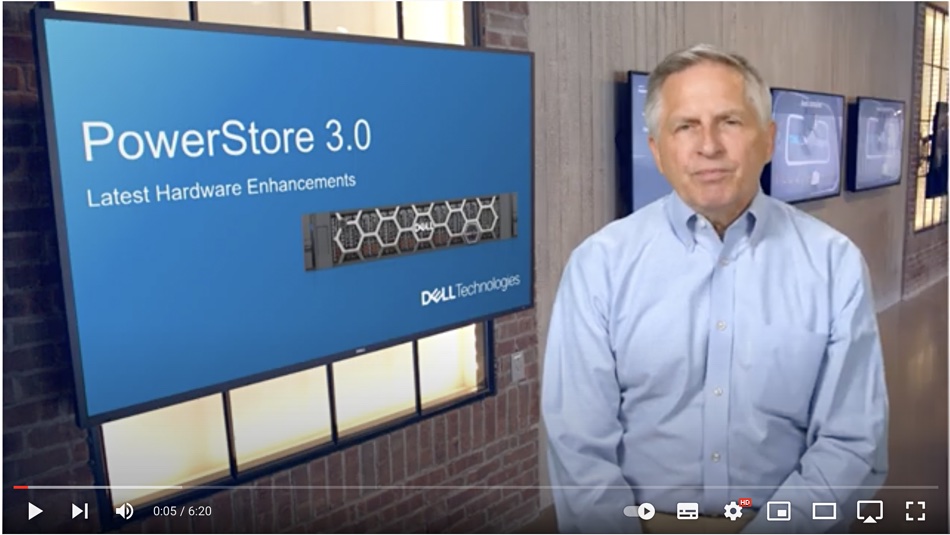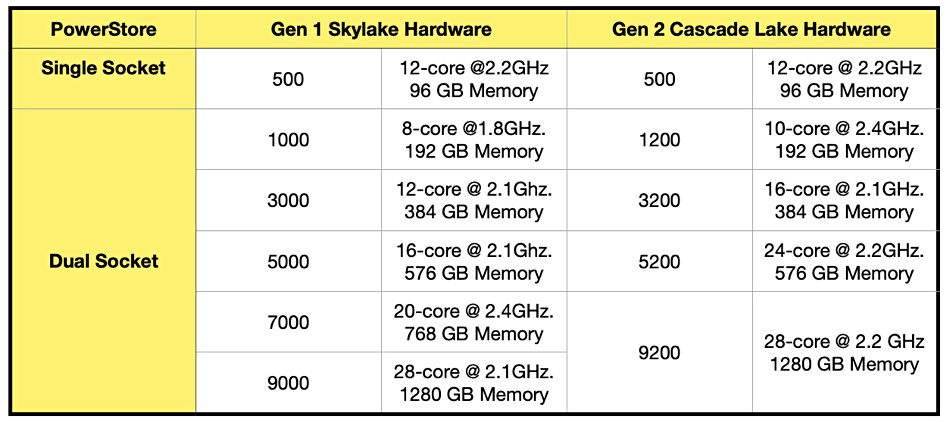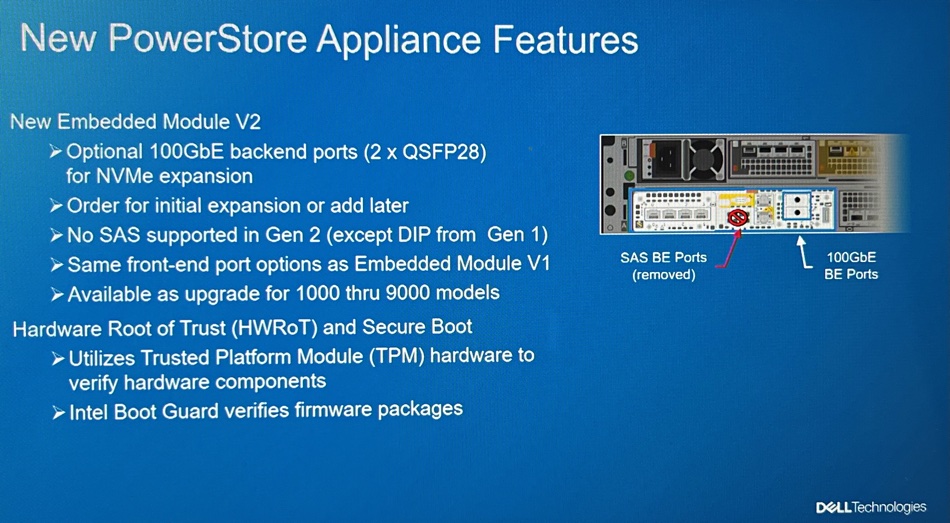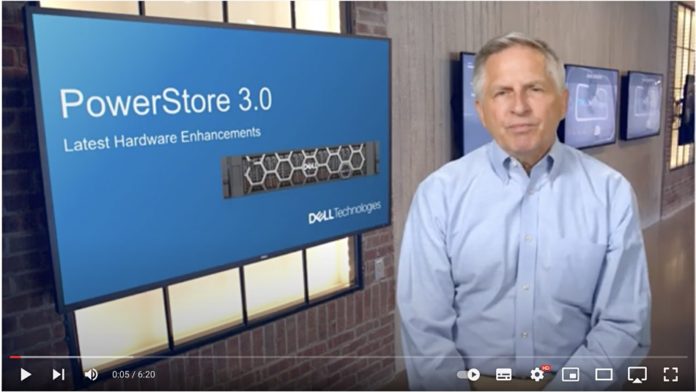Dell EMC is updating its mid-range unified file and block PowerStore array with new and faster hardware and software.
PowerStore was launched in 2020 and Dell says that 12,000 systems have been deployed with multiple exabytes of effective capacity. It competes primarily with NetApp’s ONTAP arrays in the unified file+block market and also with HPE, Hitachi Vantara, IBM (FlashSystem), and Pure Storage (FlashArray) in the block market.
As at April last year the PowerStore hardware consists of the 500 entry-level system, mid-range 1000, 3000, 5000, 7000 models and 9000 high-end array. Now the five models, appliances in Dell EMC-speak, above the 500 are succeeded by the 1200, 3200, 5200, and 9200 products; the 7000 has effectively been replaced.
A PowerStore 3.0 video has Midrange Storage Consultant Marketing Manager Phil Treide presenting the hardware updates in some detail:

The new models have Cascade Lake era Xeon processors and the hardware plus software refresh delivers up to 50 percent more IOPS for mixed workloads, up to 70 percent faster writes, and an up to a 10x improvement in copy operations.
Treide says: “Each PowerStore model offers more cores, larger memory or both relative to the model it replaces.” Here is a table listing the controller changes:

In the video Triede says there is more on the hardware front as “new 100GbitE IO modules expand the scope and performance of PowerStore’s Ethernet-based storage capabilities.” This 100GbitE capability improves NVMe/TCP performance by up to 73 percent at 50 percent lower cost per port.

PowerStore also takes advantage of silicon root-of-trust features in Intel’s Cascade Lake systems. With this, Treide says: “PowerStore OS is able to verify the identity of system hardware components to prevent malicious activity.”
A third hardware advance is a 24-bay by 2-rack unit NVMe expansion chassis. With this and 15.26TB SSDs the maximum capacity rises some 60 percent to 4.5PB effective – after data reduction – per appliance with the 500 entry-level system lifting its maximum effective capacity a little more to 4.7PB. Maximum capacity increases 66 percent to over 18PB effective per cluster, with support for up to 8x more volumes per appliance.
Existing 1000 to 9000 customers will soon be able to soon have the option to upgrade their appliance with the faster Intel processors, NVMe enclosures, and 100GbitE I/O modules as a non-disruptive, data-in-place (DIP) upgrade.
PowerStore OS v2.1 was announced in January and it added performance improvements, NVMe/TCP functionality, automated IP SAN setup and management improvements. The new v3 software adds:
- Native file, vVols and metro area synchronous replication to our existing asynchronous block replication;
- Increased file performance and VMware file support which now include NFS file datastores, native vVols replication and vVols-over-NVMe support;
- End-to-end VMware visibility within the PowerStore Manager GUI, and the ability to provision VM-level PowerStore services like snapshots and replication directly from vSphere;
- File Level Retention/WORM and third-party security monitoring;
- Hardware Root of Trust and Secure Boot for immutable silicon-based protection against malware tampering, third-party key manager support, end-to-end FIPS 140-2 compliance (including all appliance models, expansion enclosures, NVRAM and data drives) and CEPA-enabled ransomware detection.
Dell says Datadobi file migration software is now included with every new PowerStore purchase, at no extra cost.
PowerStore Gen 1 customers who enrolled in Dell’s Anytime Upgrade program will get the 3.0 software, Gen 2 hardware upgrade and ProDeploy deployment services with no additional cost – a Pure Evergreen-like experience. Dell claims this is the closest thing customers can get to a cloud experience with on-premises storage.








